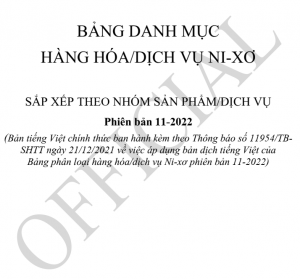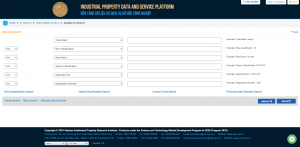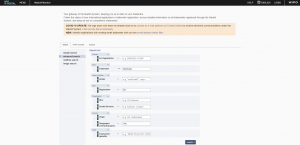Pre-filing trademark search in Vietnam – A small but significant step!
Numerous business owners believe that the brand or logo they created is original and unique, hence it is unquestionably possible to register/protect. Applying to register a trademark application in a hurry is a common mistake made by many Vietnamese businesses. Occasionally, the price they pay for their hurry is not inexpensive. If you risk using your trademark without determining if it is comparable to or in conflict with the marks of other companies or individuals, you run the danger of becoming embroiled in a dispute or being forced to become engaged in one.
1. Why is it important to conduct an availability search for the proposed mark in Vietnam?
As known, trademarks are signs used to distinguish goods and services of the same type of different organizations and individuals. Every business owner wants to create a product/service name that is good, recognizable, easy to recall, and easy to identify with the goods and services. Oftentimes, the name or logo of a business indicates or contains an attribute linked with the business, or even its motto or core principle. In light of this, business owners should always have a basis or instrument for determining if the mark intended for registration is capable of achieving protection standards and does not infringe upon the marks of other organizations and individuals.
There are numerous reasons to conduct a trademark search, but the two most fundamental are as follows:
First, the purpose of the search is to identify whether the mark intended for registration or commercial use is protectable (i.e., inherent distinctive and confusingly similar or conflicting with a prior mark);
Second, the purpose of the search is to determine the possibility of trademark infringement if the proposed mark is used in commerce in Vietnam.
2. How is a trademark search conducted?
Step 1: Determine the type of goods or services the trademark covers.
To register a trademark in accordance with Vietnam’s current intellectual property (IP) laws, you must specify or indicate the goods and/or services to be registered in the trademark application. The indication or specification of the goods and/or services in the trademark application is required for the Intellectual Property Office of Vietnam to assess and evaluate whether your applied-for mark meets the protection standards or not, such as whether your trademark conflicts with a previously registered third-party trademark for a similar class of goods/services.
Therefore, before searching for a trademark, you must have a clear understanding of the goods/services that you would brand for commercial use. Note that you are not restricted to registering a trademark for merely the goods and/or services you sell. To prevent third parties from registering trademarks for related goods/services, many trademark owners seek registration not just for the goods/services they are providing but also for the related goods/services.
For example, you are currently producing “clothes” bearing the mark “TOMHAWK”. According to the international classification of goods/services, the goods “clothes” fall into class 25. However, you can also apply to register your mark “TOMHAWK” for the goods “watches, jewelry” in class 14, the goods “leather, imitation leather, handbags, wallets, etc.” in class 18, the services “tailoring clothes; garment processing” in class 40 and/or services “fashion consulting and clothing design” in class 42
All goods/services are classified according to the International Classification of Goods/Services. Accordingly, types of products/goods are classified into classes 1 through 34 based on their nature and functions, while types of services are classified into classes 35 through 45. You can use this Classification to identify the classification of the goods or services you offer:

Step 2: In what database should a preliminary search for the trademark availability be conducted?
Vietnam’s trademark database is well established. Trademarks filed in Vietnam have been updated on the websites of the Intellectual Property Office of Vietnam and Vietname Intellectual Property Research Institute.
You can access the websites of the above two states authorities at:
• https://ipplatform.gov.vn/database/nhan-hieu/tra-cuu-nang-cao
You intend to register the trademark “EVELINE” for cosmetics in class 03 in Vietnam, for example. You enter “EVELINE” in the “Trademark” field and “03” in the “NICE classification” field, as shown on the following screen:

Are the websites of the Intellectual Property Office of Vietnam and Vietname Intellectual Property Research Institute sufficient for searching trademarks?
Definitely insufficient. Currently, Vietnam is a member of the Madrid system. Through the Madrid system, numerous trademarks of foreign organizations and individuals are registered for protection in Vietnam (international registration). In addition to the national database, you must also seek trademark details on the World Intellectual Property Organization system (WIPO). You may visit the webpage at:
https://www3.wipo.int/madrid/monitor/en/
For instance, you wish to determine if any business or individual has applied for registration of the trademark “Mumuso” for cosmetic items in class 03 designated for protection in Vietnam using the Madrid system.
First, enter “Mumuso” in the “Trademark” field; next, enter “03” in the “Nice” field and “VN” in the “Designated contracting party” field to filter the applications designating Vietnam.

Step 3: Summarize the search results and assess the trademark’s protectability
On the basis of the search results from the preceding steps, you should make your own evaluations and determinations as to whether the mark you intend to register is protectable or not in order to determine whether to file a trademark application or modify certain elements of the mark and continue searching.
3. Should you conduct your own trademark search?
You can conduct your own study to assess the level of preliminary protection for the trademark you wish to register or use. When conducting a search, if you quickly find a trademark that is identical to yours, you can easily opt not to file your trademark application.
It should be noted, however, that if the trademark you intend to register is an important one and you are eager to develop the commercialization of products/services based on this mark, it is best to consult with experts in the field of intellectual property in order to obtain accurate judgments and appropriate strategies to overcome the cited trademark (even if the mark has been registered by others) because:
• A prior trademark may be cancelled at the request of a third party if it has not been utilized within five years after its registration date. Thus, you have the option to request the cancellation of the other party’s trademark if two conditions are met: first, the trademark must have been registered for more than five years, and second, the owners do not use their trademarks.
• The trademark registration has expired;
• The trademark owner no longer exists or is no longer in business without a legal successor.
In reality, quite a few businesses have registered trademarks, but do not use them for commercial purposes. Rather, they use them to restrict third-party market access. And many businesses do not comply with the requirement to renew/maintain the validity of their trademark when it expires. Moreover, there are instances in which businesses successfully register trademarks, but cease to exist legally after a period of operation.
Keep in mind that analyzing search results can be difficult; it can be challenging to identify if a proposed mark is registrable. Many trademark owners believe that their mark is only marginally similar to the prior mark, and so should be acceptable. Others are gloomy, claiming that their trademark cannot be registered because it is confusingly similar to that of others. Therefore, the trademark search is only truly useful if you have adequate knowledge and experience to make accurate judgements and evaluations regarding the protectionability of the proposed trademark and any legal risks if you intend to use the mark before it is registered.
In fact, there are several instances of similar marks that are not confusing enough to prevent registration. “Confusing similarity” is fundamentally a relative concept, i.e., one mark may appear confusingly similar to another from the perspective of one individual, but from the perspective of another individual, the marks are completely distinguishable. Therefore, in order to analyze and identify the results of a trademark search, it is important to depend on the legal requirements on intellectual property of Vietnam, in particular the detailed regulations that guide the assessment of two confusingly similar marks. However, this should ideally be performed only by trademark experts with substantial experience.
Final thoughts:
The optimal approach, in our opinion, is that after conducting a preliminary search based on your knowledge, if you do not find any prior reference marks, you should not yet assume that your trademark is likely to be protected. Continue exploring the possibility of trademark protection through IP service firms with extensive practical experience to assist you in determining the protectability of the mark you intend to register and the risks to be anticipated if you use the mark while awaiting the substantive examination result for your trademark application from the Intellectual Property Office of Vietnam.
Pre-filing trademark search in Vietnam is crucial, enabling you to anticipate risks, avoid the possibility of wasting time waiting for the substantive examination result of your application examination (from 16 to 20 months), avoid wasting money on trademark filing, and avoid putting your business at risk of being sued for trademark infringement if your trademark is denied protection due to conflicts with other prior trademarks.
Please contact KENFOX IP & Law Office today if you need a professional intellectual property service provider to assist you in developing your business in the right direction.
Readmore:
- Trademark Registration in Vietnam: What You Need to Know
- Fighting Counterfeits And Trademark Squatting In Vietnam: A perspective from Foellie case
- How did “DING TEA” milk tea win the brand battle in Cambodia?
- Trademarks and trade names: What lessons can be learned from the recent pharmaceutical trademark lawsuit in Vietnam?
- How is Goods/Service Relatedness Significant for Trademark Registration in Vietnam?

